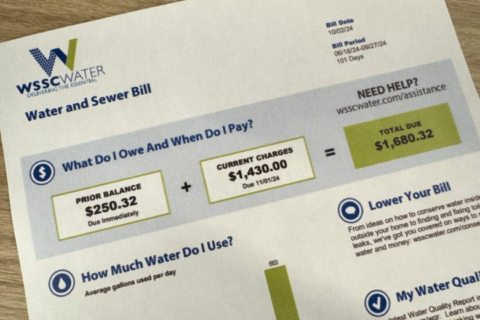
New York (CNN) — It’s easy to feel either elated or deflated when using outside metrics to compare where you are in your financial life with where you “should” be for your age.
This can be especially true when it comes to savings in the United States. That’s because workers rarely get pensions anymore and the social safety net doesn’t fully cover most retirees’ expenses, which puts the onus on individuals to build their own nest egg.
So whether you’re 35, 45 or 65, the question many ask is: “Are my savings on track to provide what I need when I retire?”
To approximate an answer there are plenty of benchmarks out there to consider. Just know they are by no means the final verdict on how you’re doing.
Why? Because your life is complex, you have a lot of competing financial goals, and what you’ll need individually when you retire isn’t necessarily reflected in generalized benchmarks, which make assumptions about your income, savings and withdrawal rates, market returns, taxes and other factors. Please keep that in mind, especially if you’re discouraged your savings don’t currently match the recommended targets for your age. More on that below.
A very ballpark estimate
One of the more flexible age-based retirement savings benchmarks comes from mutual fund company and 401(k) record keeper T. Rowe Price.
T. Rowe Price researchers aimed to offer recommendations that give most people a good chance of not running out of money in retirement, which can last up to 30 years.
Among their assumptions, they presumed your retirement savings are in tax-deferred accounts like a 401(k), which means you will owe income tax on your withdrawals in retirement. They also assume you retire at age 65 and withdraw 4% a year from your portfolio. They further assume that you started saving as a young adult, initially socking away 6% of your income, then increasing your contributions by 1% a year until you reach a certain threshold.
Based on those assumptions, here’s what they suggest people ideally should have in savings, represented as a multiple of whatever their income is at a given age.
- Age 30: Half your current gross household income
- Age 35: Between one year’s income to 1.5 times
- Age 40: 1.5 times to 2.5 times
- Age 45: 2 times to 4 times
- Age 50: 3 times to 6 times
- Age 55: 4.5 times to 8 times
- Age 60: 5.5 times to 11 times
- Age 65: 7 times to 13.5 time
So, for example, if you’re 35 with a $50,000 income, ideally you would have $50,000 to $75,000 set aside for retirement.
At 55, if your household income has risen to $100,000, optimally your savings would range between $450,000 and $800,000.
But here’s the thing …
Many Americans’ savings likely fall at or below the lowest end of the recommended savings range for their age. The most recent retirement confidence survey from the Employee Benefit Research Institute, for instance, found that only 36% of respondents pegged the total value of their savings and investments at $250,000 or more.
But there are plenty of reasons why you shouldn’t be discouraged if your current savings are below a suggested target.
For instance, if you’re married, measure your income and savings on a combined basis with your spouse. That will give you a better read on the resources that will be available to you. If you have equity in your home, that can bolster your retirement security if you sell the home and downsize or move to a lower-cost area.
Keep in mind, too, that while targets are based on giving you a very good chance of never running out of money, that also means hitting those targets gives you a good chance of dying with a lot of money left over. That may not be a priority for you. Or you may plan to work past age 65, which will give your savings more time to compound.
Nevertheless, a benchmark can provide a goal to aim for. If you’re not at your chosen target but want to be, T. Rowe Price provides a table to help you gauge how much more you might save annually based on whatever your savings are today. (Your 401(k) provider may also offer an online calculator for you to assess how much more you might save to achieve different targets.)
A 40-year-old with the equivalent of one year’s salary saved, for instance, might want to bump up his annual savings to 17% of his household income going forward. That percentage includes any matching contribution his employer offers.
When benchmarks won’t tell you much
The closer you get to retirement, the less helpful any general benchmarks are as a guide to whether you’re on track — because the particulars of your actual life are what you need to consider.
How you live in reality — your needs and wants and how much they cost — should drive your thinking about whether your savings are “on track,” said New Jersey-based certified financial planner Ann Minnium.
“People use benchmarks and feel confident in their position without realizing that spending is the main issue,” Minnium said. “I have had two different retiring clients come to me with the same amount of money. One of their plans looked great. The other looked terrible. This was due to the spending lifestyle that each client wanted.”
Keeping things simple, “I would say that if people save 15% to 18% of their salary annually starting with their first job, they should be in good shape for retirement,” she suggested.
Of course, that’s out of reach for a lot of people. But it doesn’t mean you can’t do more to fatten your nest egg. Even if you can’t save as much for retirement as recommended, said certified financial planner Roger Young, a vice president at T. Rowe Price, at the very least try to save enough in your workplace plan to qualify for your employer’s full matching contribution.
That match is free money to you (and a part of your total compensation). So, making sure you get it all can go a long way to bolstering your financial security.
The-CNN-Wire
™ & © 2023 Cable News Network, Inc., a Warner Bros. Discovery Company. All rights reserved.








